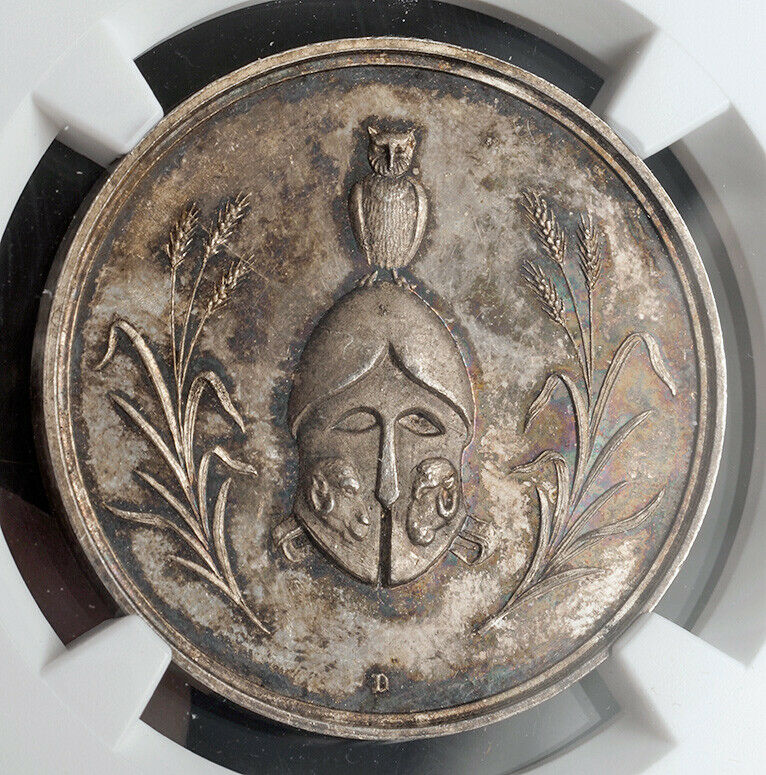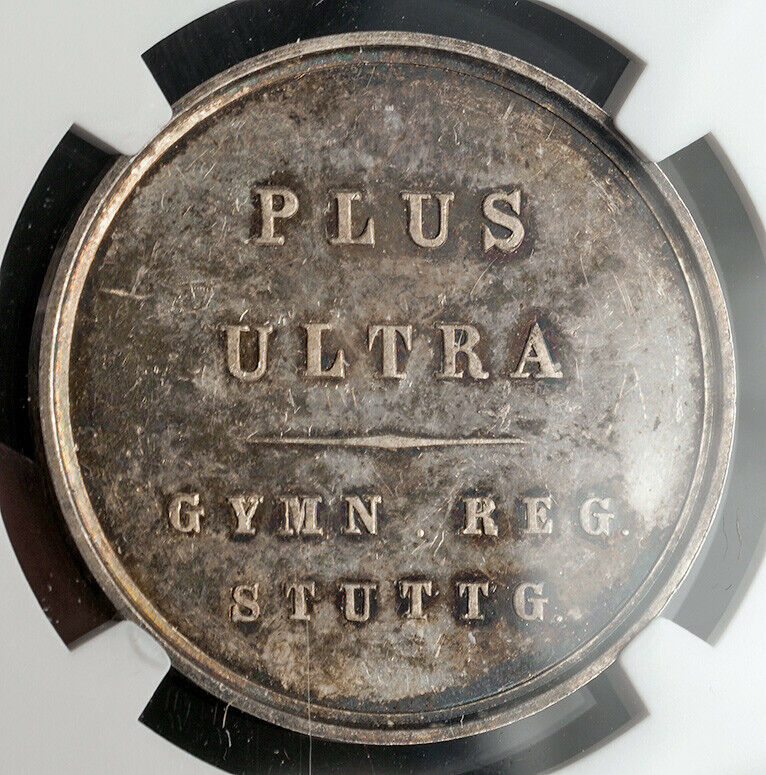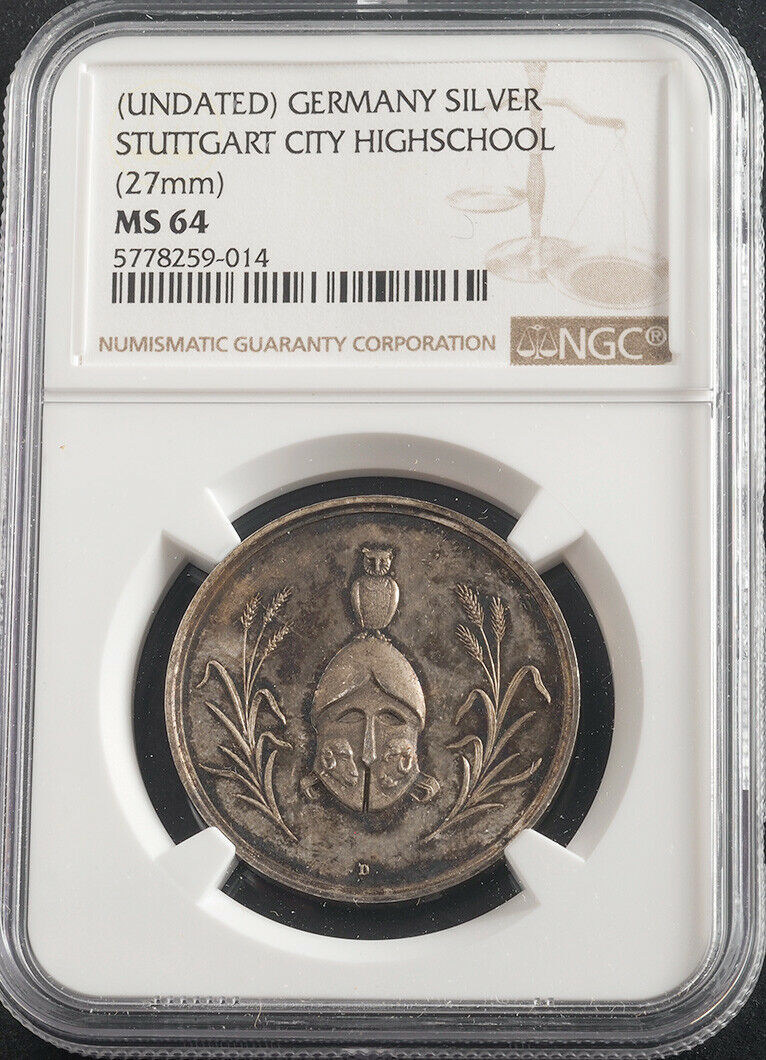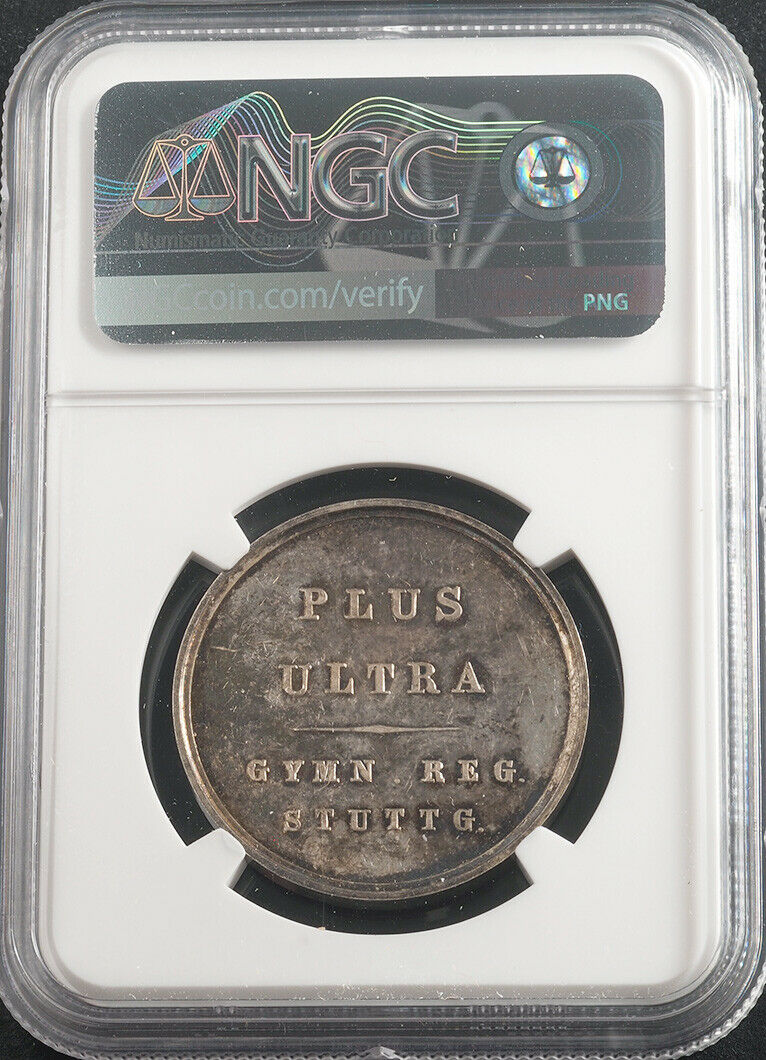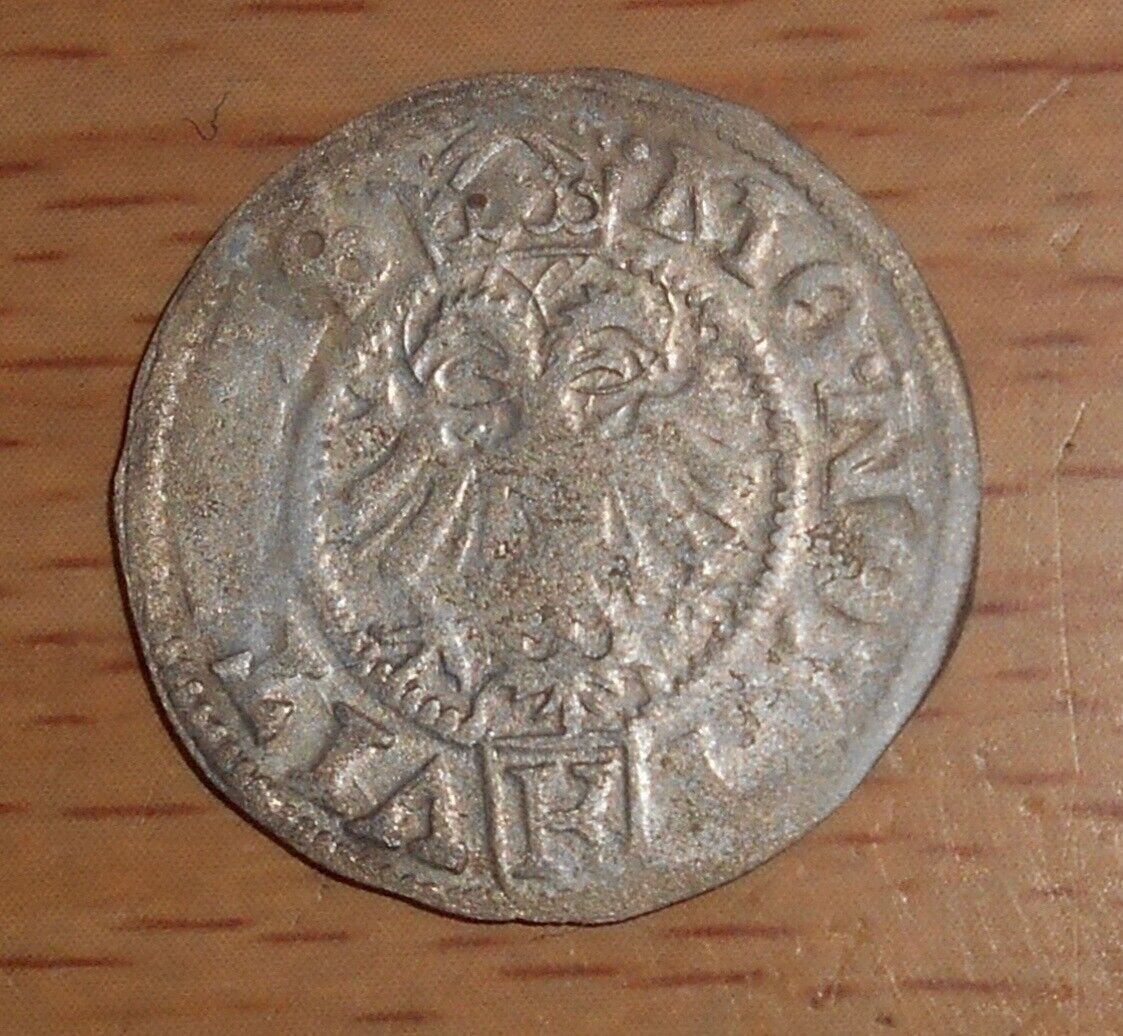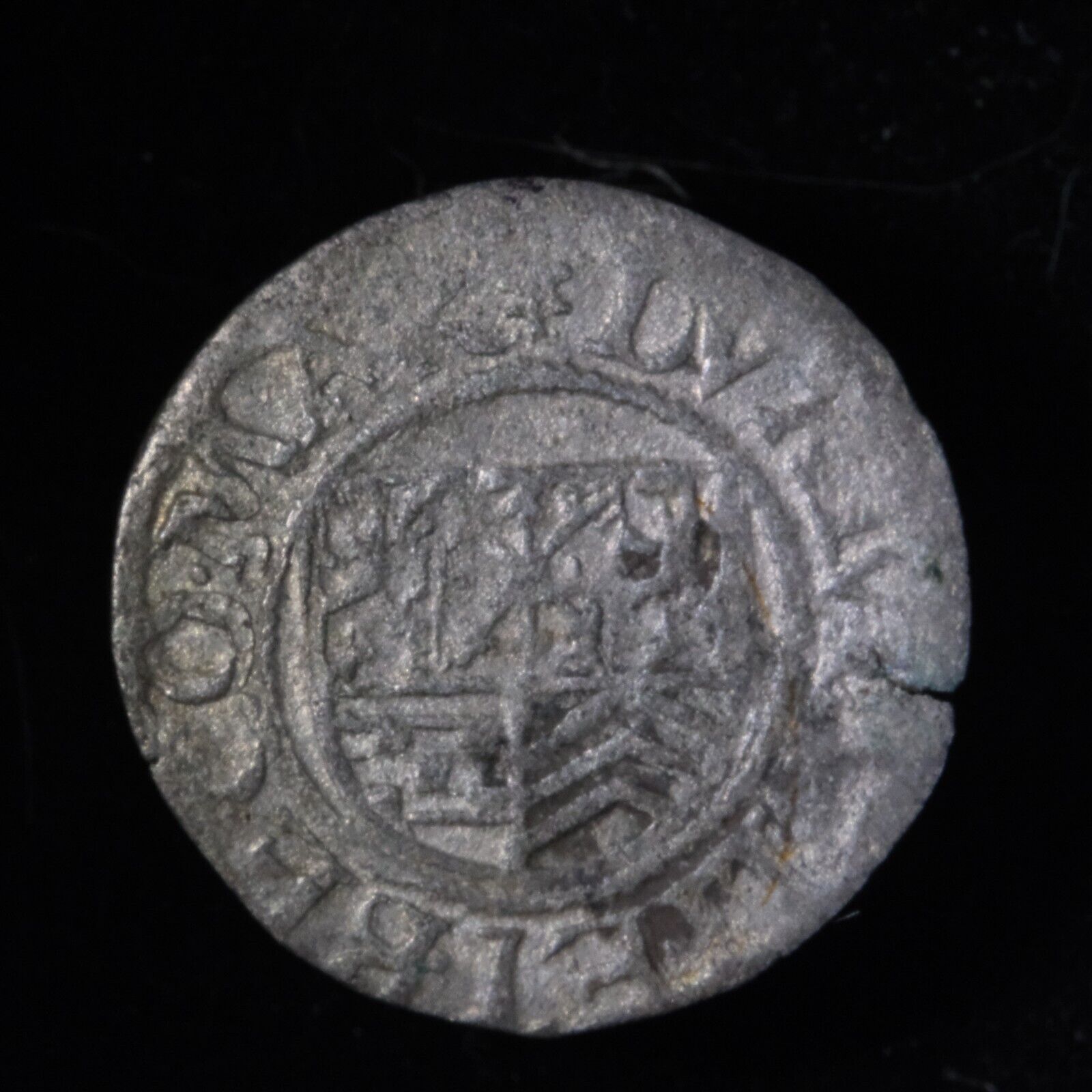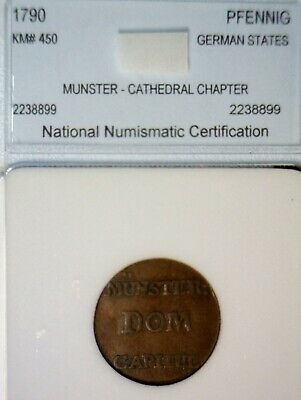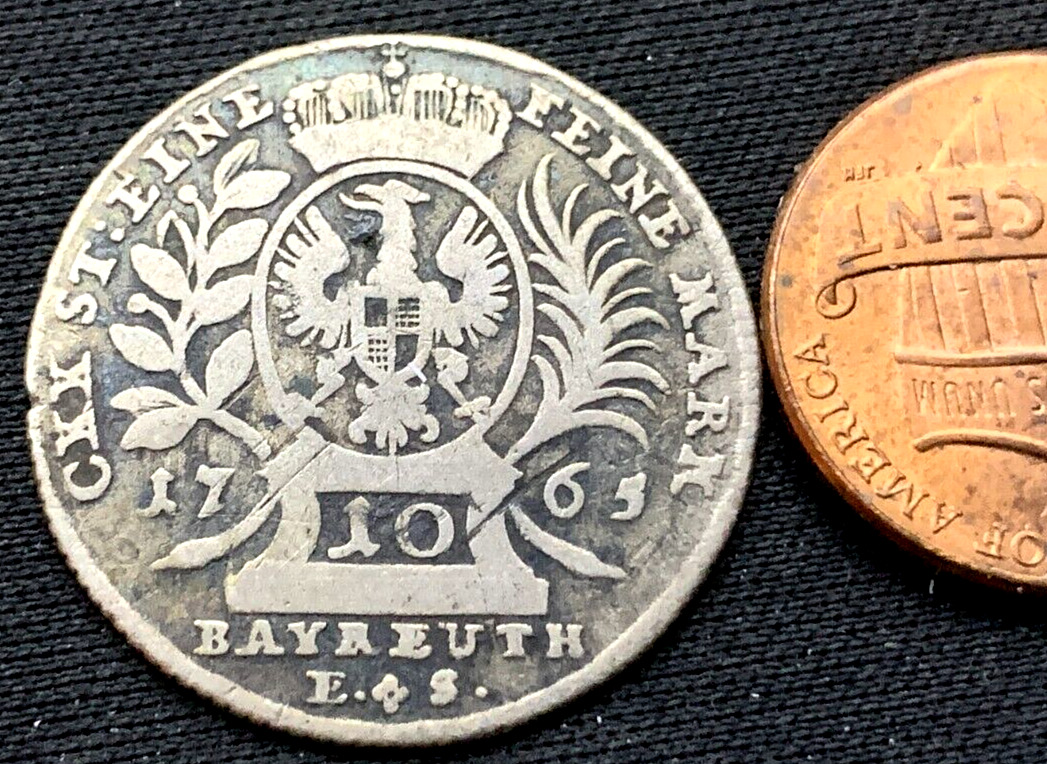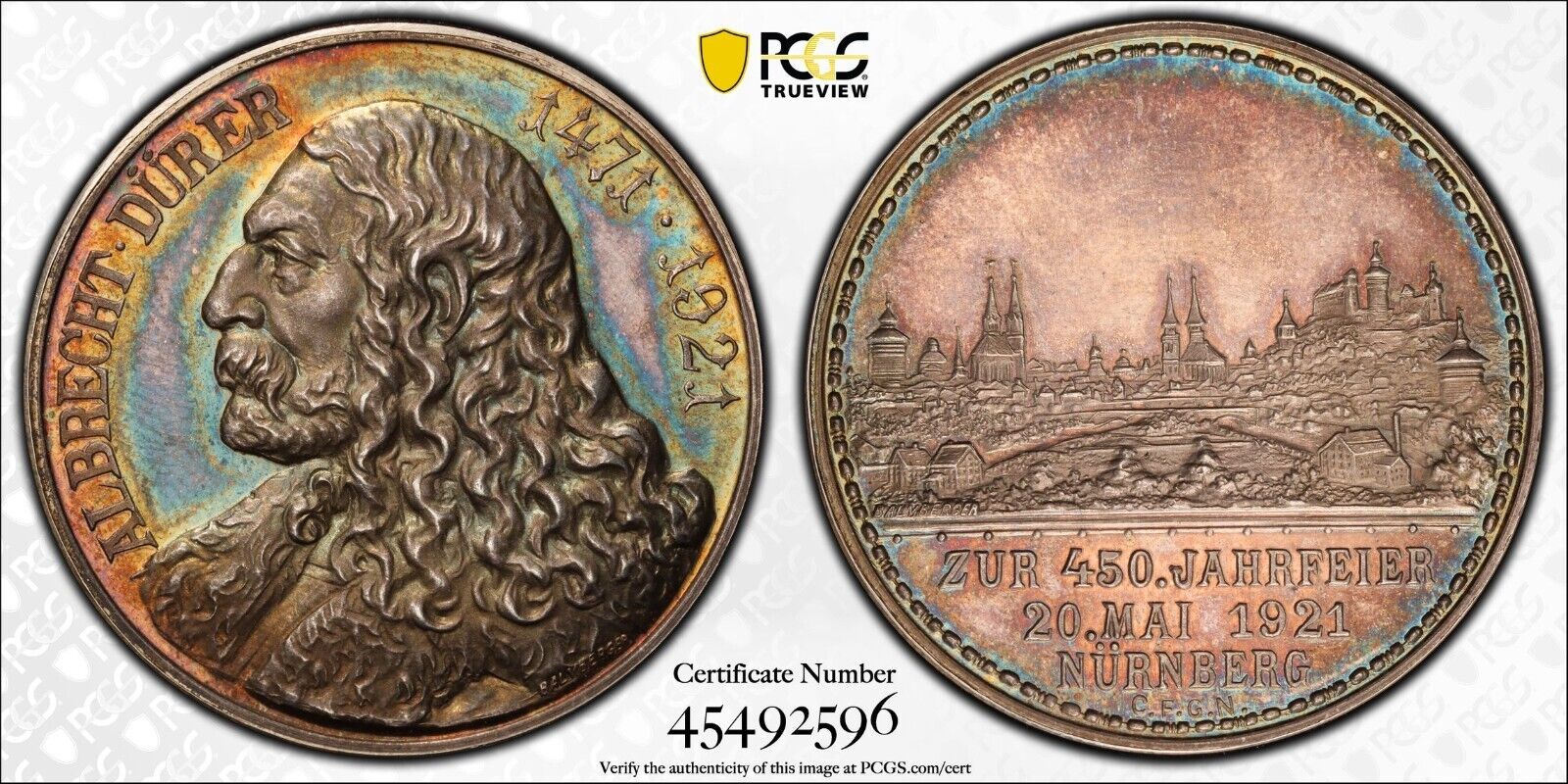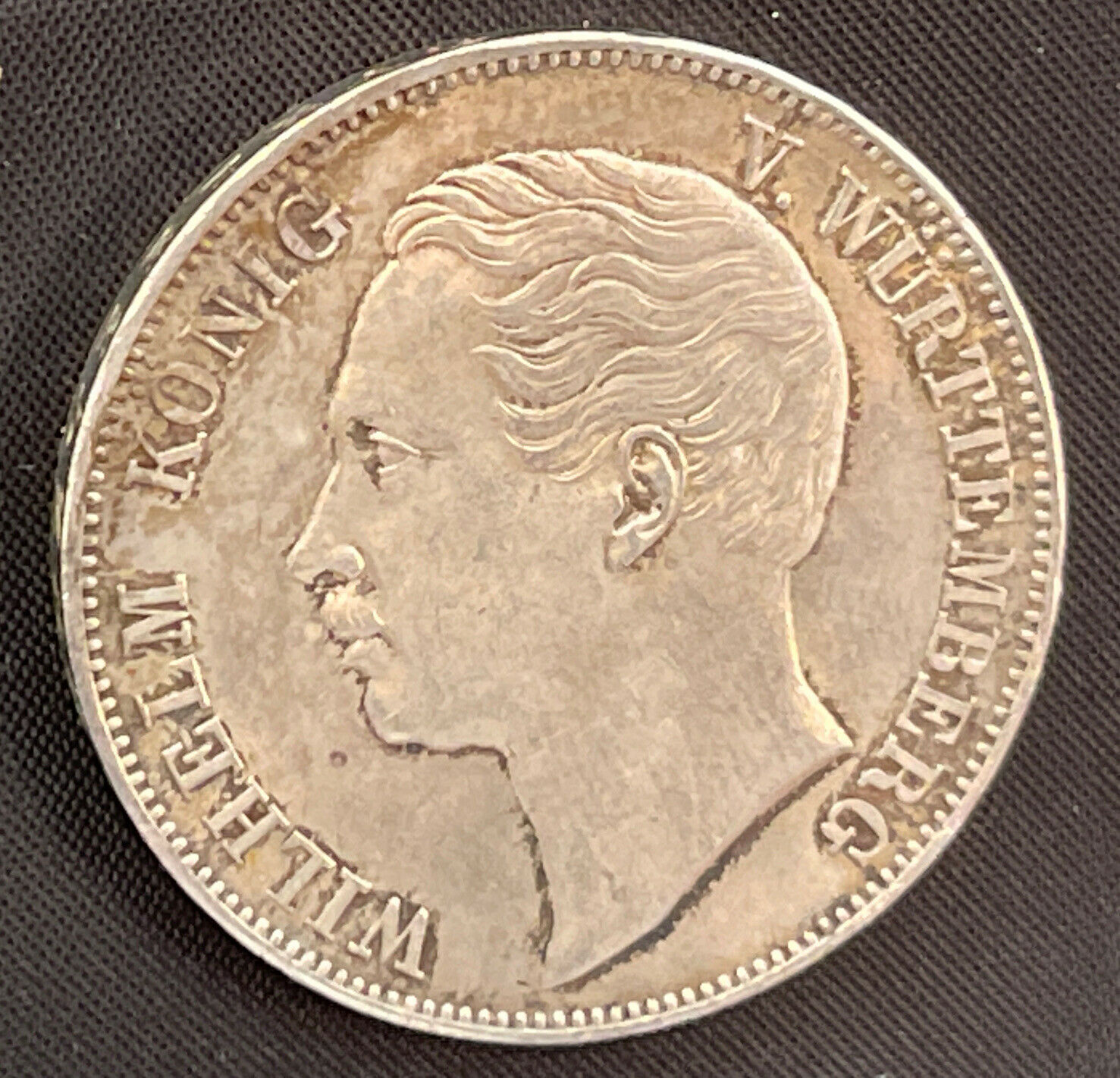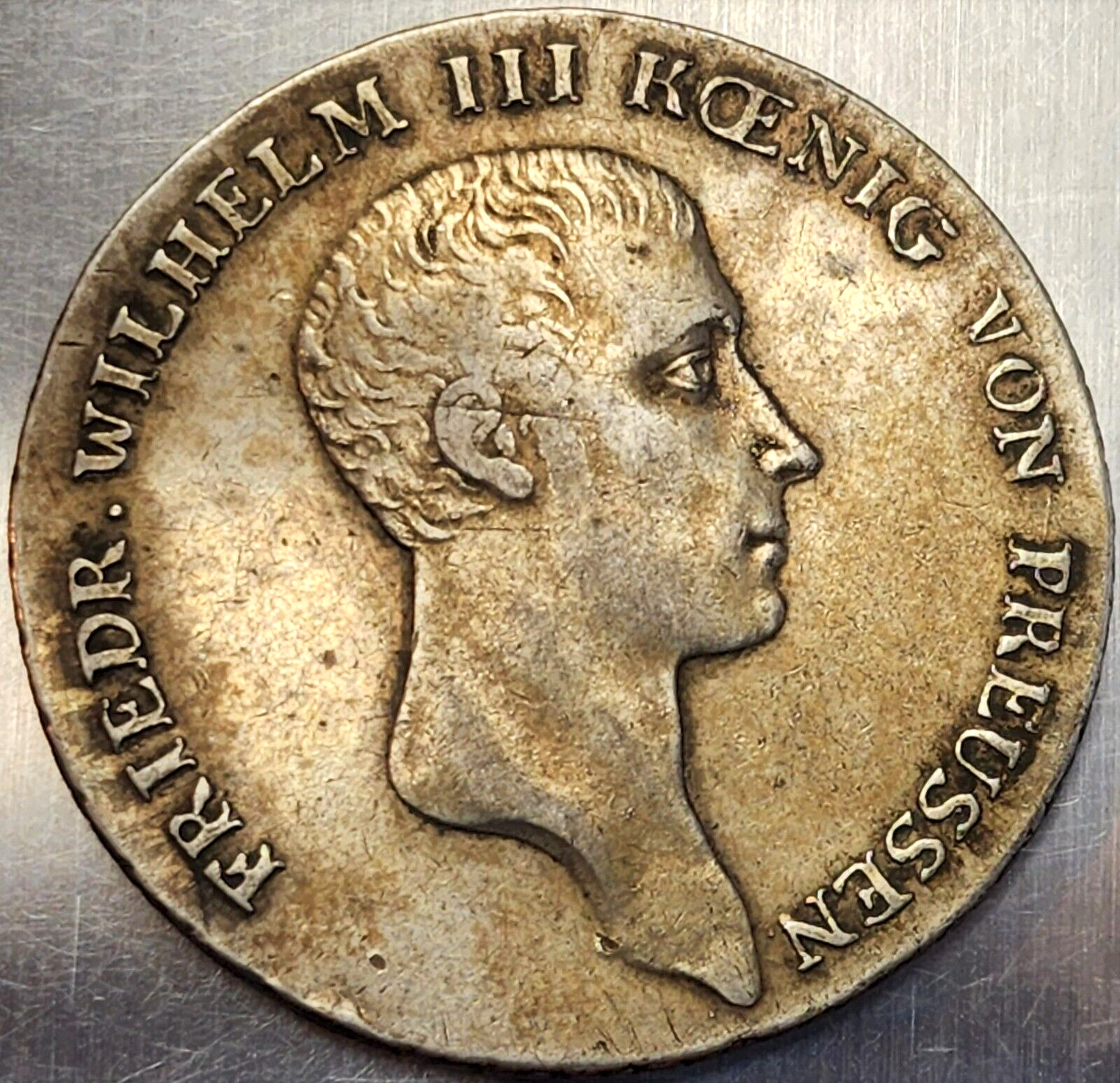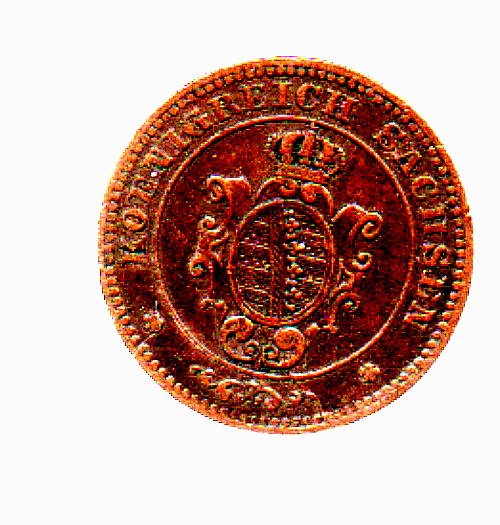-40%
1850, Baden, Stuttgart (City). Rare Silver "High School" Award Medal. NGC MS-64!
$ 136.75
- Description
- Size Guide
Description
CoinWorldTV1850, Baden, Stuttgart (City). Rare Silver "High School" Award Medal. NGC MS-64!
Mint Place. Stuttgart
Reference: Wulster 1926.
Mint Year: ca. 1850-1900
Condition:
Certified and graded by NGC as MS-64!
Denomination: Award Medal -
Realgymnasium (High School) of Stuttgart (City), Germany.
Weight: 19.89gm
Diameter: 32mm
Material: Silver
Obverse:
Corinthian helmet topped by owl (allegoric for wisdom) flanked by wheat-sprays. Medallist´s signature (D) at 6 o'clock.
Reverse:
Inscription in four lines separated by decorative element.
Legend: PLUS ULTRA / GYMN REG. STUTTG.
Authenticity unconditionally guaranteed.
Bid with confidence!
Gymnasium
(German pronunciation:
[ɡʏmˈnaːzi̯ʊm]
; German plural:
Gymnasien
), in the German education system, is the most advanced of the three types of German secondary schools, the others being
Realschule
and
Hauptschule
.
For Johann Joachim Becher, education also had the mandate to support the replacement of the Holy Roman Empire with a more republican commonwealth. His school would have had the task of creating education and teaching an organized state structure. His ideal was the artisan, the educated scholar, the universal scientist.
In the German secondary school system,
Realschule
is ranked between Hauptschule (lowest) and Gymnasium (highest). After completing the
Realschule
, good students are allowed to attend a professional Gymnasium or a general-education Gymnasium. They can also attend a
Berufsschule
or do an apprenticeship.
In most states of Germany, students start the
Realschule
at the age of ten or eleven and typically finish school at the age of 16–17. In some states,
Realschulen
have recently been replaced by
Oberschulen
or
Sekundarschulen
. In 2006 1.32 million German students attended a
Realschule
.
At
Realschule
, a student gets an extended education and learns at least one foreign language, usually English. In the state of Baden-Württemberg, after the sixth grade, the student has to choose among technology, home economics, and a second foreign language, usually French. The new subject becomes the student's fifth main subject, after German, maths, science and English; and it is also possible to learn other foreign languages in free workshops. Other subjects are geography, social sciences, economics, history, religious education, and physical education. After the 8th grade a student has to choose between arts and music.
High school diplomas obtained in Canada or the United States are usually acknowledged as a
Mittlere Reife
(graduation from a
Realschule
). In some cases however students may apply for certain subjects at a university. All students holding an American high school diploma may apply for the
Studienkolleg
, and after successfully graduating from this they may attend a German university. Those holding a high school diploma can choose from a wider range of possible major subjects at a German university if they did well on the SAT or ACT. Those who scored higher than 1300 on the SAT or higher than 28 on the ACT may apply for any subject at a German university.
Gymnasia and
Realgymnasia
are the classical higher or secondary schools of Germany.
Starting in 2010/2011,
Realschulen
were formally abolished in Berlin and merged with
Hauptschulen
and the old
Gesamtschulen
to form a new type of comprehensive school, called
Stadtteilschule
in Hamburg and
Sekundarschule
in Berlin.
Only 1$ shipping for each additional item purchased!
